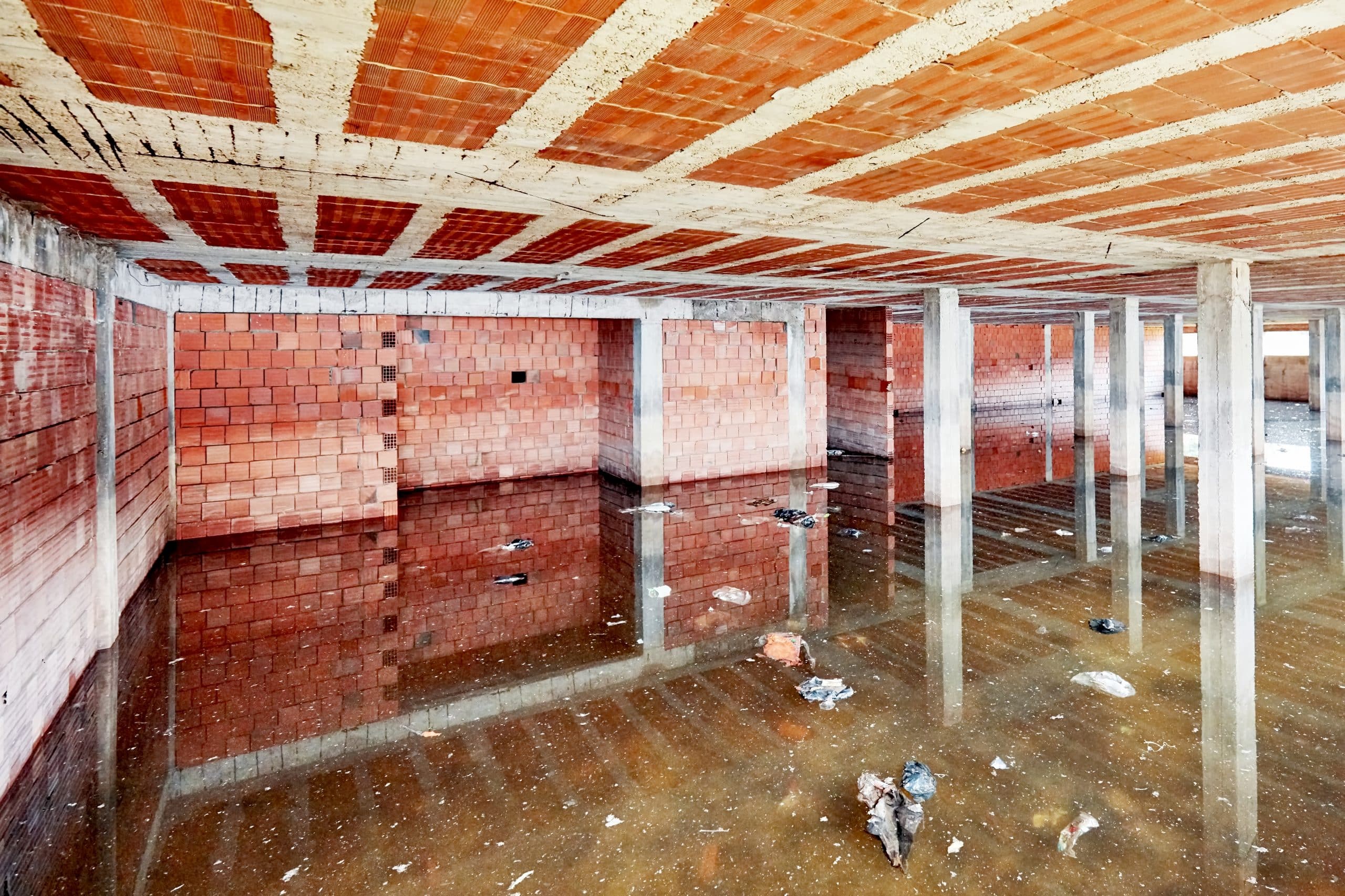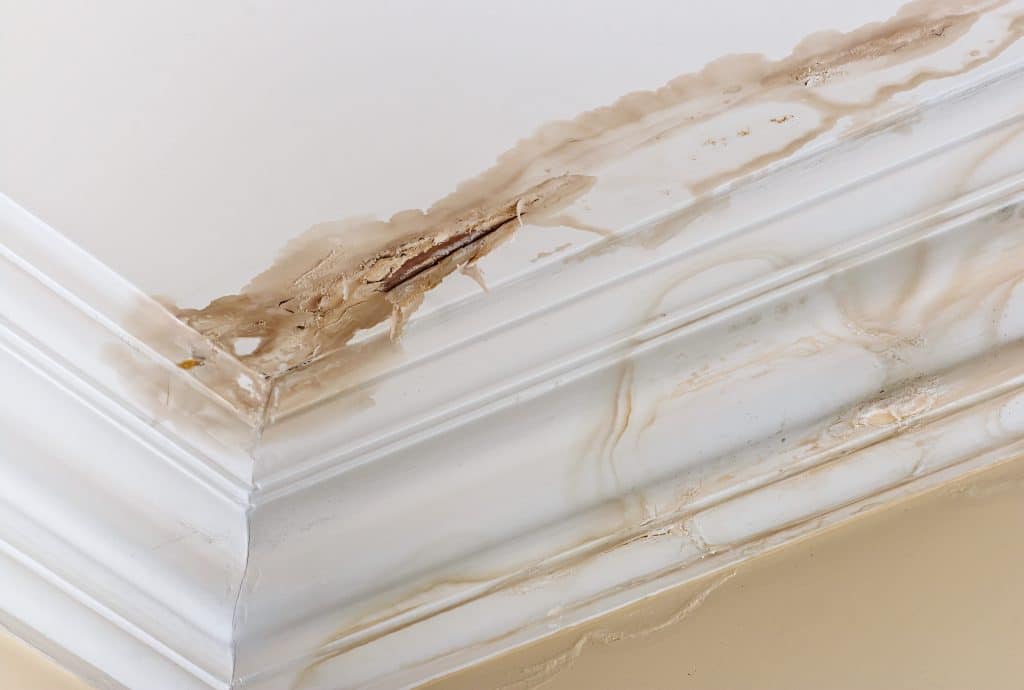
Most of the time, people find water inside of their basement, somewhere it should not be, right after moving in and experiencing their first big storm in the house. We get a few of those calls after every major storm that hits our area. If that’s the case with you, or even if it just suddenly happened and you don’t know why, fear not. Though it is a pain, everything can be fixed and remediated. Some of the solutions for this, are even within the reach of the typical homeowner to take care of with minimal expense.
Let’s Start Outside of Your House
The main goal of the exterior structures of the house, is to prevent the elements form coming inside of the house. Water being chief among those. When I am on site, during the walkthrough, the first idea I present is making sure you are looking for how water can get into the house. And water is certainly relentless. Let’s go through some of the major structures and how they can let water into your basement, and what you can do to prevent that.
The Roof Structure
If you’ve ever had roof challenges like leaking or needing to replace a roof, you will already be experienced with some of the hassles associated with this structure. But there is another important reason to establish a proper maintenance cycle on your roof, and that is it can help put water in your basement! There are almost always warning signs and areas of interest for this challenge, but few things beat simple observation of the gutters and the inside of the attic during or directly after a big storm.
Shingles
Keeping an eye on your shingles throughout the year is always a best practice. A ladder up to at least observe by the gutters is recommended, however, if ladders terrify you (no judgement here), feel free to grab out those dusty old binoculars from the garage and check. Doing a good once over to see if there are any missing and loose shingles can help reduce roofing expenses, but the areas we are looking at are specifically around the eaves. That’s the part of the roof that is the overhang, where the gutters are attached.
Flashing
Flashing is typically used as a transition material that is installed over wood and under an exterior surface component, like under the shingles. You’ll more than likely need a ladder for this, but your inspector should tell you if you are missing flashing. The flashing used around the gutter areas is called Drip Edge flashing, and not only prevents water from getting into the wooden attic structure, but also helps keep your basement dry.
Gutters, Downspouts, and the Often Forgotten Leaders
And we have come to the most important part of the roofing when it comes to water management. I’ll keep this simple. Clean your gutters. And just because you’ve got a leaf guard does not mean you can ignore your gutters, especially during the leaf fall season. If you see huge curtains of rain pouring out of the front or back of your gutters, then it is time to clean them. You should have downspouts attached to the gutters, and those downspouts should have a pipe attached to it at or below ground level that goes out past your foundation about six feet. That extension piping is called a leader, and even the cheaper plastic piping can save you a TON of heart ache when it comes to water in your basement.

The Cladding
Cladding is essentially your siding, the differing materials that encapsulates the exterior wall structures.
Siding and Trim
Most of the time, it is pretty easy to see sections of missing siding, as you can see the white paper behind the siding. However, it gets a little more difficult to find once you start taking into account all of the various transitions and corners of the siding material. Wherever multiple construction materials meet on the exterior, such as the trim around the windows and the siding, there should be a gap. That gaps should normally be filled with an adhesive like caulking to prevent moisture intrusion. Anywhere there could be a gap or a crack around the materials, you could be letting water into your framing, and then into the foundation materials.
Flashing
Similar to the roofing section, around many exterior transitions there is the L shaped metal called flashing. This is most easily noted between the exterior wall and a deck connection. If missing, that wood where flashing should be attached to, normally begins to rot and introduce water into the framing, then, you guessed it, it can go down into the basement.
The Grading
Negative or positive grading is typically something you will see in an inspection report. Essentially this is the slope of the ground around your foundation. Typically the first six feet or so. Positive is good, this is a little slope, kind of like a little skate board ramp that can lead water away from your foundation. Negative is where the ground slopes back towards your foundation, and typically indicates that there is some improper drainage going one. Normally you can point to the topics we discussed in the roofing portion. And just to confuse you more, I’m going to add some more vocab terms.
Swale
Pronounced “s-whale”, this way you can flex on your inspector, and it’s the general slope of the whole property. So, if your house is at the bottom of a hill, you have a negative swale. Normally, poor or negative swale leads to that nice soupy back yard, and ground water slowly making its way through the concrete walls (remember that concrete is porous, more on that later).
Crown
This is if your house is on the top of a small hill, IE has positive grading.

Areas of Interest in the Basement
And now we get to the real meat and potatoes here. If you read this first, good on ya! Now go back and read it from the top. There’s a reason I structured it in this order! Knowing how your roof drains, and the drainage of the property is key to first understanding why and how you have water in your basement.
Foundation Walls
For this, we have two main ideas here, if the basement is finished, and if it is not. If it is not, were looking for standing water, or staining on the concrete. If there is a white, powdery substance on the concrete, that is called efflorescence, and its a salt like material that normally indicates the drying of moisture. Cracking in the concrete that has either staining or active water coming out require immediate attention, more often than not. If you have a finished basement, check around the carpet and buy a moisture meter (you don’t need a top of the line one either).
Rim Joist
A rim joist is an important structure component in your foundation. Its a long section wood at the base of the framing. Check the corners, and under doors and decks. You will see wood rot and moisture coming in from there. We can normally blame improper flashing for this, and should be attended to by a licensed professional.
French Drain and Sump Pump
If you have poor exterior drainage that can not easily be changed, or have a house in a high water table area, typically you will have a French drain and a sump pump. A French drain is a pipe that encircles your foundation, under the slab. It collects water that collects and sits next to the foundation. The pipe then meets at a whole in the slab, called a sump crock, and inside of that is a motor called a sump pump. If you’re getting water in your basement around your sump pump, there’s a few things it could be, all with fairly much the same outcome. You will need a new sump pump. Go over to your sump pump, remove the lid, and there will be something called a float switch, manually lift that. If it does not work, you know what to do. Pro tip: buy a battery back up for your sump pump. When you don’t have power is typically the time where you REALLY want a sump pump to work. If you have no sump pump, and there’s water around the perimeter of the foundation, go window shopping, the installation is not cheap.
And of Course, Plumbing
Plumbing leaks look like coffee staining when they have been active for a while, or have happened a while ago. If it looks like a dark ring around a lighter interior, its normally older. If its solid in one color, dark, its normally active. The only real way to know for sure, is to check with a moisture meter. Plumbing line leaks, are typically much worse than they appear if they have been left on their own for too long. The only way to know for sure is to open up the ceilings and walls.
Supply Lines
Almost all supply lines have shut valves at the system they are supplying, like under sinks or behind showers. If you encounter a leak, go to the supply line, and shut off the water. Go down to the front wall of the basement, and turn off the main water shut off valve, then call a plumber.
Drain Lines
Toilets. Its almost always toilets, or improper shower installation. If your toilets are loose, you’ll more than likely need to replace the wax ring. Turn off your toilets water supply, and its an easy job. If it’s anything more than that, time to call a plumber. If your drain lines are metal, get a sewer scope preformed.
Appliance Drain Lines
Making sure that the small PVC piping that is coming down from your furnace is not leaking. Make sure that line, called your condensation line, is cleaned regularly. About twice a year should be just fine. If there is a pipe coming off the side of your water heater that is dripping, or worse, call a plumber.


